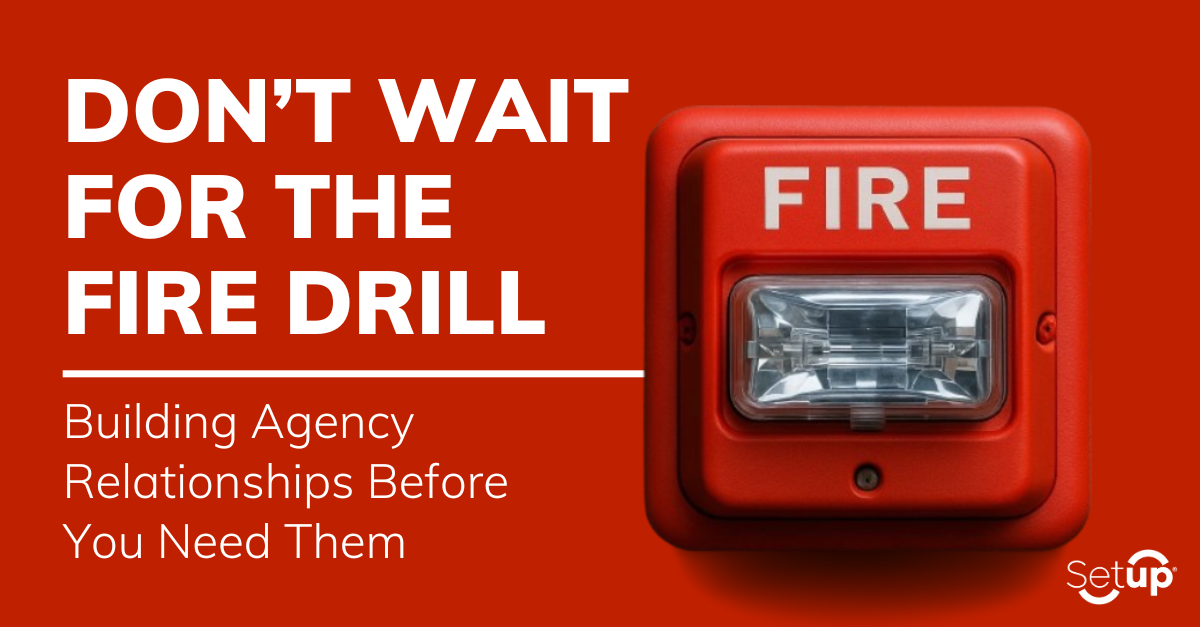Don’t Wait for the Fire Drill: Building Agency Relationships Before You Need Them
Most agency searches begin with urgency: a priority shift, a launch date appears, and suddenly, you’re writing an RFP at midnight. In that scramble, you invite too many firms, ask the wrong questions, and end up choosing based on pitch theater instead of day-to-day fit. The fix isn’t a better RFP template. It’s time - specifically, the time you spend getting to know agencies before you need one.
Think of agency selection the way great teams approach recruiting. The best hires rarely come from a cold resume; they come from ongoing conversations, mutual curiosity, and small moments of collaboration long before an offer. Agencies are no different. When you’ve had thoughtful, low-pressure conversations with a handful of partners over the course of a quarter or two, the “search” stops feeling like a procurement exercise and starts feeling like matching.
What those early conversations look like
Start with a clear intent: you’re not shopping, you’re learning. Share where your brand is headed, the constraints you can’t change, and what success will actually look like internally. Ask the agency for a point of view, not a capabilities deck. Good partners will talk frankly about what’s changing in your category, how they’d structure a creative system that actually travels across channels, and how they’d measure progress without drowning you in dashboards. Great partners will bring an artifact - a framework, a scrappy example, a way of working - you can react to. That exchange is far more revealing than a credentials page.
The tone matters. Keep the conversation practical, short, and specific. If you have a seasonal spike, talk about it. If your product roadmap is volatile, say so. You’re testing for chemistry and problem-solving, not polishing a stage performance. Notice who asks sharp questions, who listens, and who resists the urge to oversell. Those tells predict what the first messy month will feel like more than any case study.
How to keep the cadence light and useful
A simple rhythm works best. Set aside a little time each quarter for two or three “office hours” with agencies mapped to likely future needs - brand lift, a launch, a performance reset. Add an occasional roundtable where a few agencies react to the same prompt; you’ll see different minds attack the same problem in real time. After each conversation, jot down what stood out: insight quality, practicality, creative imagination, measurement rigor, and operating model fit. Over time, you’ll see patterns that a formal scorecard would struggle to capture.
Share enough context to make the dialog real - growth goals, non-negotiables, the way your team works - without pretending you have a final scope. You’re not committing; you’re building a shared understanding. Done well, these conversations give both sides a head start when the moment arrives.
Turning relationships into a tighter RFP
When a need becomes concrete, you’re not starting from zero. You already know which three to five agencies understand your world and feel right for the work. Your brief improves because it’s grounded in months of dialogue: you can articulate the business problem, the audience truths, the constraints, and the way you want to collaborate. You can ask for working artifacts instead of theater: a first pass at a creative system, a 90-day plan that shows who does the work and when, a measurement spine that ties to revenue. And you can design the “chemistry” step as a working session - small, focused, and honest - because you’ve earned enough trust to work, not perform.
The payoff isn’t just a better partner; it’s a calmer process. Onboarding accelerates because the agency has context. Internal confidence is higher because stakeholders saw the thinking develop over time. And you’ve reduced the career risk of picking the wrong fit under pressure.
Where Setup fits
This approach is the core of how we work. Setup helps marketing leaders shape their ideal ecosystem - what stays in-house and what goes to partners - and then we introduce a handful of well-vetted agencies that align with your needs and culture. We facilitate those early conversations, help you capture what you've learned, and, when the time comes, turn it into a brief and a shortlist that makes sense. No pay-to-play. No spray-and-pray. Just deliberate relationship-building that leads to more intelligent decisions.
The truth is simple: the best RFPs are the ones that feel almost unnecessary because the right answer has been developing in plain sight. Start the conversations now, while you have the time to be curious. When the stakes rise, you’ll already know who you want in the room.




Over the past year, we’ve watched the following patterns emerge across seemingly unrelated sectors: rising consumer expectations, demand for authenticity, growing complexity, and the tension between automation and human connection.
We interviewed multiple marketers from an array of industries in our blogs below, and we discovered consistent trends across the board. Check out all of our industry blogs throughout 2025 from leaders at Blackbaud, Hiscox USA, Mimedx, MONPURE, Kimberly-Clark Professional, and more.